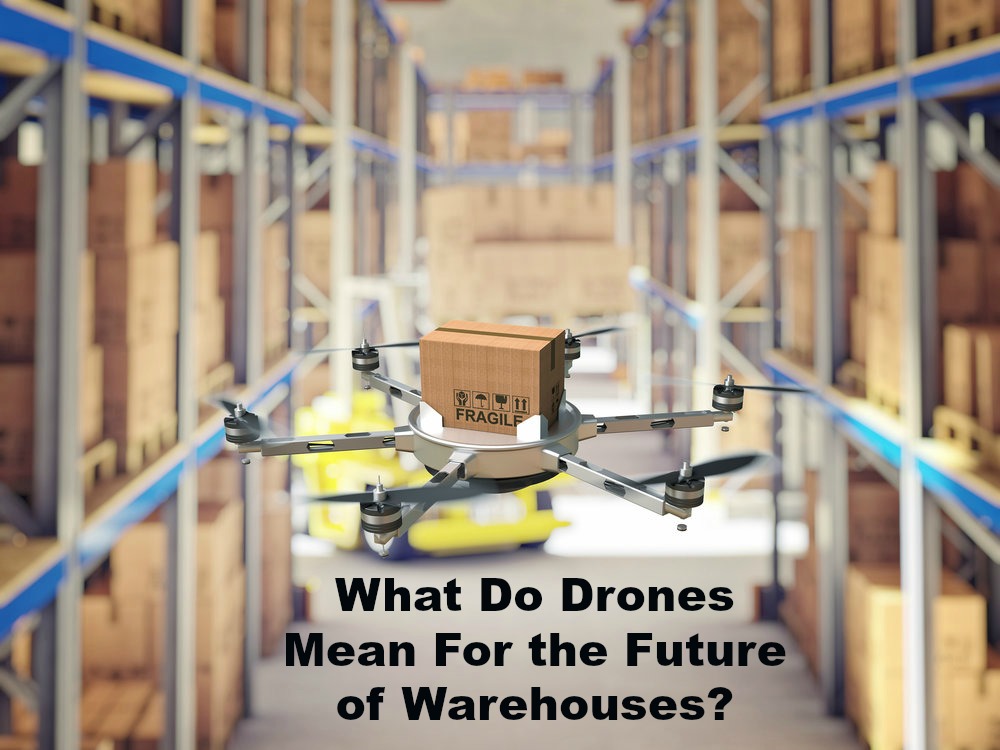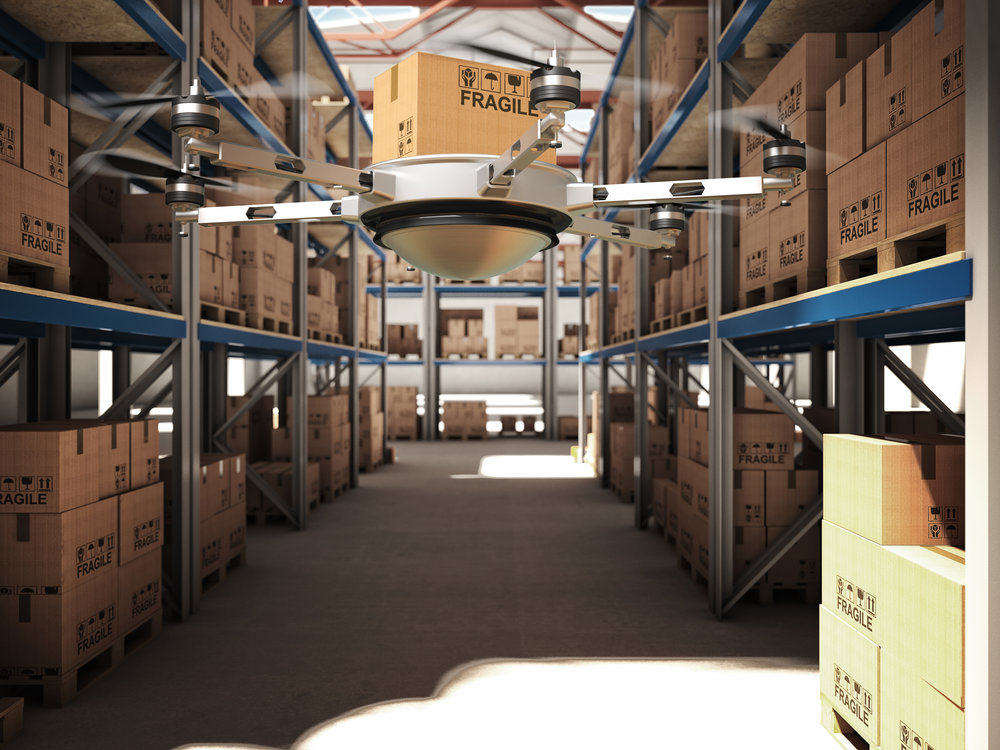Wasp Barcode Technologies: The Barcode Solution People
What Do Drones Mean For the Future of Warehouses?
 It’s been years since Amazon first publicly floated the idea of using drones to deliver orders to the homes of their customers. We’re likely still years away from drone delivery as common practice. The range of most current drones would limit them to delivering to customers who happened to live near a warehouse, and there are legal obstacles to surmount as well. Companies are already using drones to facilitate product deliveries in less obvious ways: Behind the scenes, in the warehouses of large and small retailers alike, drones are quickly altering the way businesses track and ship out their inventory.
It’s been years since Amazon first publicly floated the idea of using drones to deliver orders to the homes of their customers. We’re likely still years away from drone delivery as common practice. The range of most current drones would limit them to delivering to customers who happened to live near a warehouse, and there are legal obstacles to surmount as well. Companies are already using drones to facilitate product deliveries in less obvious ways: Behind the scenes, in the warehouses of large and small retailers alike, drones are quickly altering the way businesses track and ship out their inventory.
[Tweet "Drones are quickly altering the way businesses track and ship out their inventory."]
Drone activities in the warehouse may not involve lightweight flying platforms zooming throughout the facility, picking up products from the shelves and dropping them into waiting delivery boxes. Amazon is one of several pioneering companies (a group that also reportedly includes Zappos, Walgreens and Staples) already utilizing robots created by Kiva Systems. These are one-foot high wheeled bots that can lift and transport shelves throughout the warehouse. Voice of America detailed how they work in an article from 2013:
Cameras located underside scan coded directions painted on the floor while the central computer wirelessly gives orders to the cars to deliver the goods to human packers. When a robot receives the order for certain merchandise it identifies the shelf containing the ware, lifts it just a few inches off the floor and carries it to a worker, who only has to place the item into a box on a conveyer belt to the shipping department.
[su_divider top="no" size="2"]
[su_divider top="no" size="2"]
Using thousands of these robots reportedly saves Amazon hundreds of millions each year, thanks to the robots’ greater efficiency compared to their human counterparts. Clearly human workers are still needed: they finalize and confirm the deliveries, and some will likely move into the realm of drone repair, management and operation in coming years. This technology is already old by logistics standards, and will soon be replaced by airborne drones with greater capacities in the near future.
The technology for the use of flying drones in warehouses (and beyond) is still being developed by a number of companies for a variety of uses, though all are centered around the concept of increasing efficiency without losing quality. Over the next 10 years, drones are expected to make inroads in the following sectors:
- Inventory management: Drones can help warehouses update and coordinate their inventory management databases in several ways. Some heavy duty drones should be able to help transport packages between warehouses to help meet local or even regional demand without relying on trucking. There are also developments in drone technology that include attaching barcode scanners to flying drones, allowing them to update inventory logs at a greater rate than human workers can and can even do so overnight (more on that below).
- Claims and returns: A customer dissatisfied with a product may no longer have to trek to the post office to return it, or require a truck to come by their home and add to the area’s traffic congestion drones will eventually be dispatched directly to the customer to pick up an unwanted item. Retailers could use heavier duty drones to return entire damaged pallets as well.
- Store to customer: The long-term for drone use, as mentioned above, is using them to deliver directly to the customer. Perhaps the customer orders online, or perhaps they visit an in-store location and have their purchase delivered to them at home later that day. We already have the technology and logistics to facilitate same-day delivery, drones will only make that process easier and faster.

The question of how we will arrive at the point where all three of these ideas have come to fruition is a good one, but we’re well on our way thanks to the work of several companies in particular:
DroneScan: Though DroneScan doesn’t create drones, they have invented a device that connects the “old” technology of barcode scanning with new drone technology. Though barcodes have been around for over 40 years, they’ve proven surprisingly resilient and flexible, and now form the backbone of most automated inventory management systems. DroneScan helps drones navigate the warehouse and scans barcodes applied to shelves and products in order to update the inventory database, alerting the company if supply is running low or has remained on the shelves long enough that deterioration is now an issue.
The company claims that this technology will be a boon to warehouse workers, who won’t have to work overtime to complete inventory counts (it’s estimated that a drone operator can scan more inventory in two days than 80 workers can in three), nor will they need to put themselves in potential danger by climbing ladders to reach the top of shelves.
Zipline and UPS: Coming from another direction, Zipline is creating fixed-wing drones that will look to deliver medical supplies to remote areas of Rwanda. Some vaccines and medicines are simply too expensive to keep on-hand in controlled environments (particularly in rural Rwanda), but are often needed right away when injury or sickness strikes.
UPS recently formed a partnership with Zipline (and the Gavi Alliance, a public-private partnership group) to both provide help with shipping and logistics as well as to learn about the company’s drone delivery methods. Perhaps one day, UPS will look to integrate Zipline’s methods of receiving an order (people in Rwanda will be able to make requests via an app or simply an SMS message on their phones) into their own delivery systems; and smaller startups providing important deliveries of time- and temperature-sensitive materials will be able to better regulate their products in their warehouses, which is an obstacle warehouse operators around the world have tackled for decades.
There are many obstacles in the way of seamless drone use in the warehouse: reducing obstacles like support pillars; creating uniform shelf height and width to regulate drone movement; remove “barcode clutter” (asking drones to read different barcode symbologies increases processing time); improving drone battery power, or devising ways for drones to charge themselves during down time; creating new safety measures to account for numerous flying robots populating the warehouse; and more. The goal of “continuous inventory,” an inventory management process that never stops, even for working hours, requires the help of powerful drones, and thus finding answers to these issues.
Drones will soon revolutionize warehouses. It will be up to business owners to capitalize on this emerging trend by keeping up with automated inventory management, without alienating the human workforce that helped get them to this point.
How could drone technology effectively improve daily operations in your warehouse?




